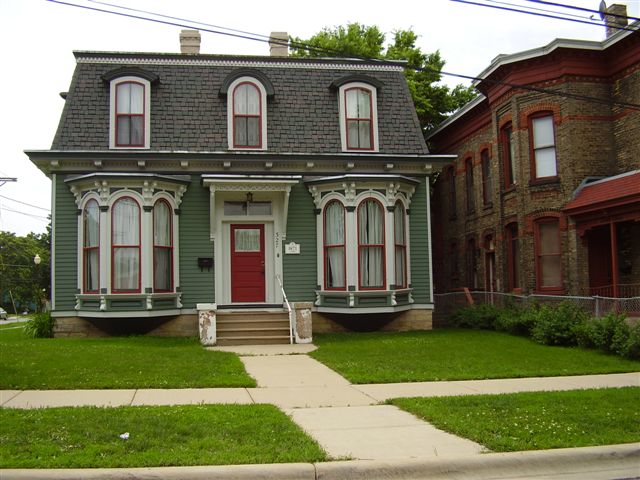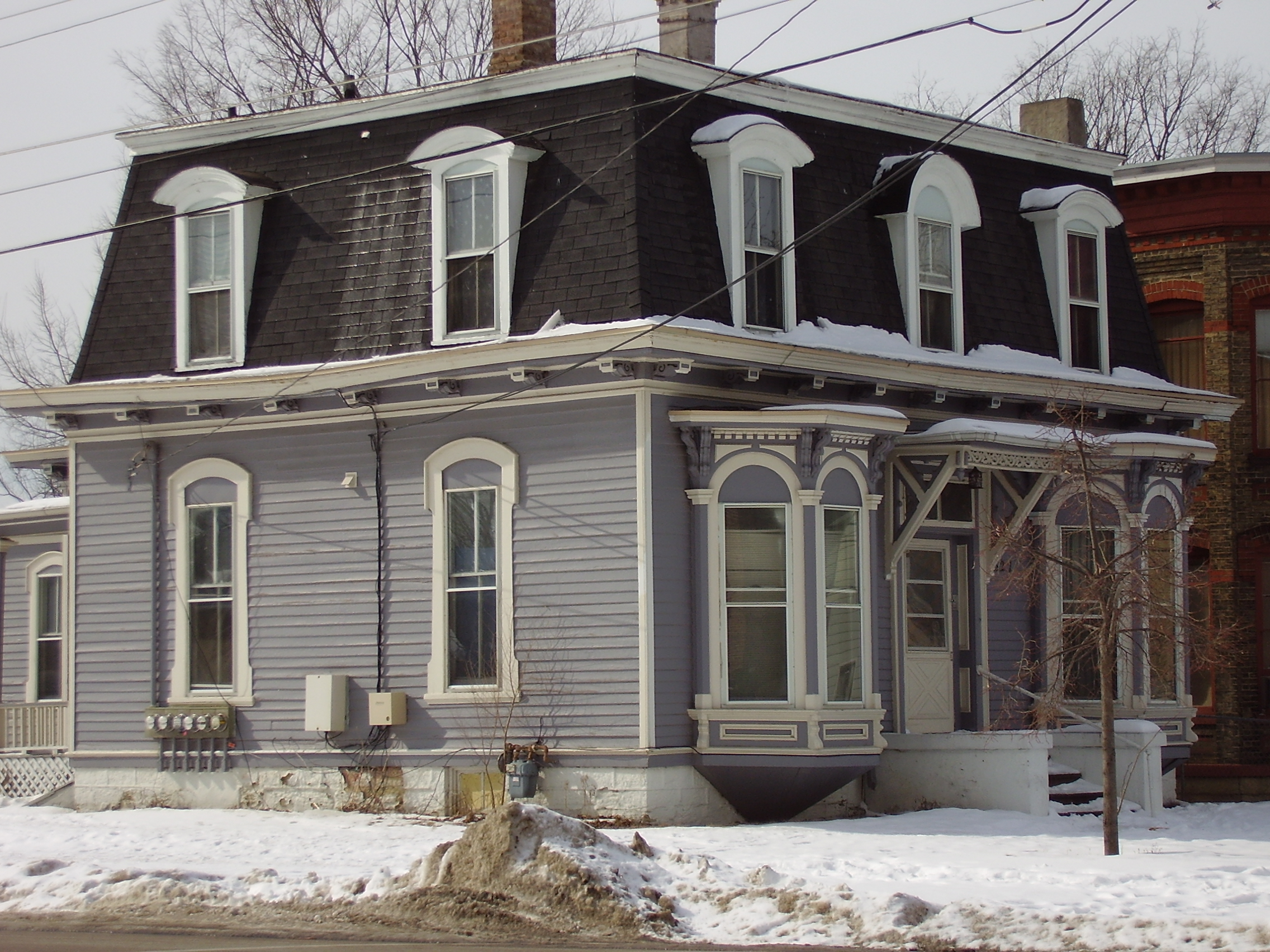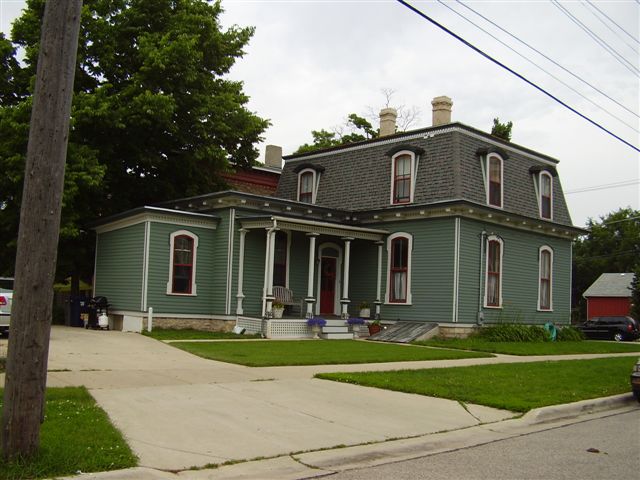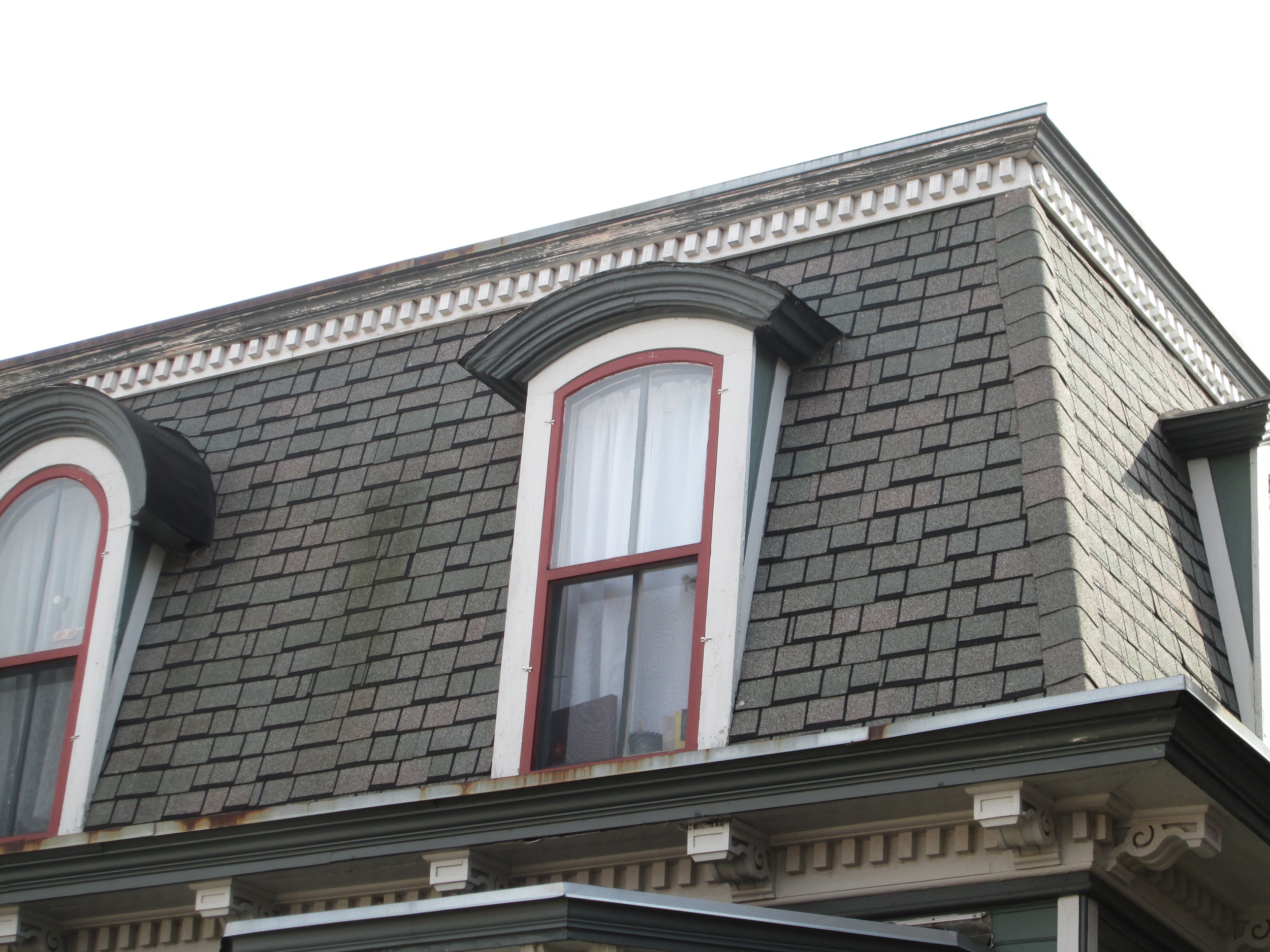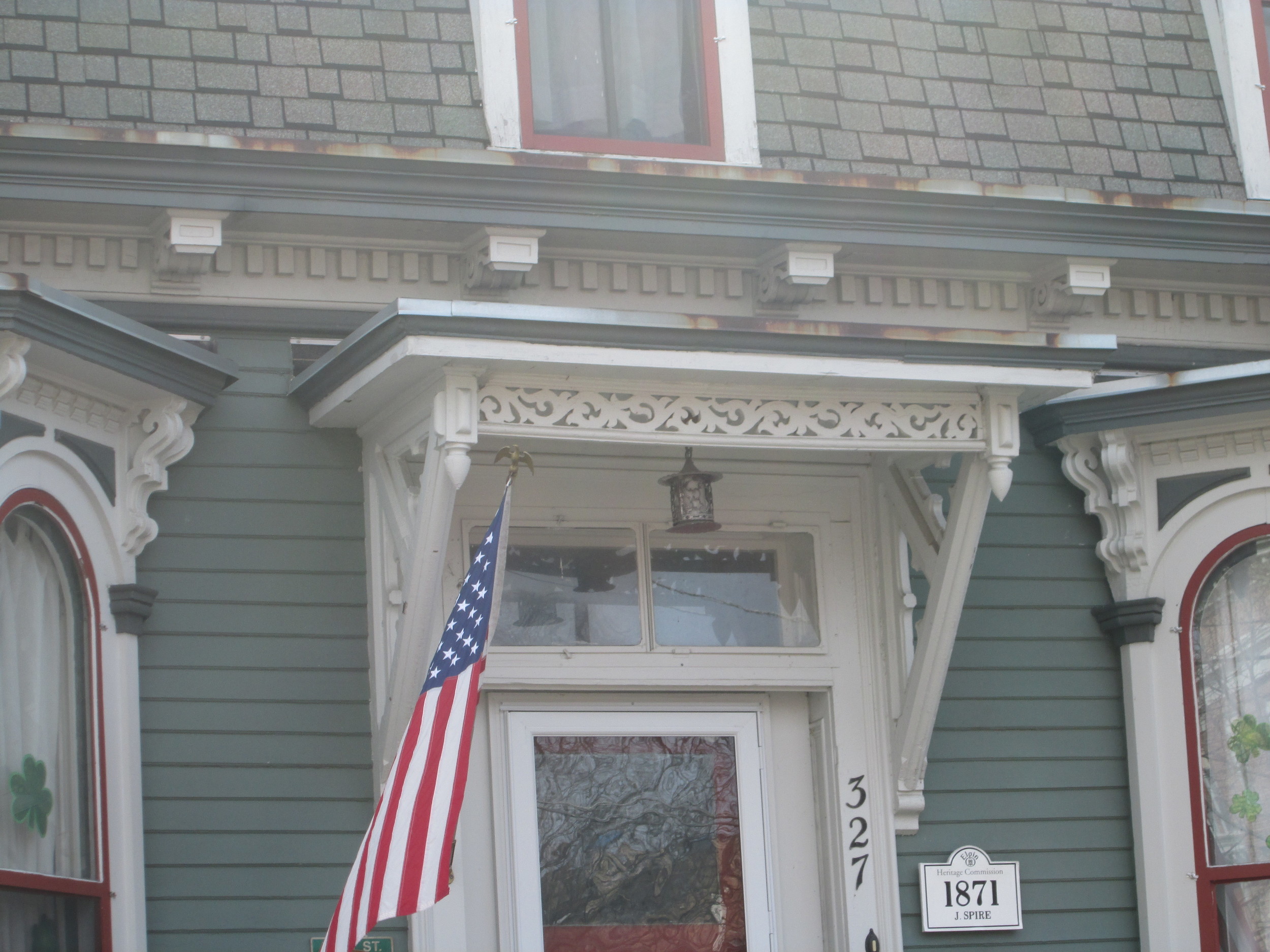327 DUPAGE STREET
HISTORIC SIGNIFICANCE
327 DuPage Street of the Second Empire style, built in 1871 for John Spire and his family. John was a merchant and capitalist originally from New Amsterdam, New York. John settled in Elgin around 1848 with his six children and his second wife, Kezia. Kezia passed away in 1871 leaving John to remarry Clarissa Watkins. John passed away in 1882 at the age of 84.
In 1871, John's son, Samuel, likely built 327 DuPage as he was listed as a carpenter in the City directory. After the building was built, the Spire's sold the home to George & Frances Linkfield for $1,200. The Linkfields owned the property until 1876 when it was then sold to Cora Gifford who owned the property until 1881. The property switched hands several times until John & Agnes Murphy bought the property in 1886.
John Murphy was an Elginite most popularly known for his association as an alderman of the fourth ward, his notorious speeding in his car, the "Red Devil," as well as for his invention, the motorized sweeper, which was financed by the American Tower and Tank Company (renamed the Elgin Street Sweeper Company in 1922). The Murphys lived at 327 DuPage Street until 1919 when it was sold to its next owner, Maria Tyrell.
ARCHITECTURAL SIGNIFICANCE
327 DuPage Street is listed as a contributing structure to the Elgin Historic District. It is of the Second Empire style, also known as Mansard or General Grant style. The Second Empire style was popular at the same time as the Italianate. Italianates (1845-1885) are considered a part of the Romantic movement in house design whereas the Second Empire (1855-1885) are part of the Victorian movement. The roof gets its name after an architect, Francois Mansart who developed this style during the Napoleon era in France.
327 DuPage Street is a two-story, square house with a single story extension at the rear and an additional small extension, likely added later. The shingled mansard roof contains three windows on the front facade, each with a rounded arch above. First floor windows are placed directly below the second floor windows and are found to be more elaborate than the upper floor windows. A dentil cornice runs around the roof top with brackets that are evenly spaced below the eave line.
Other examples of the Second Empire style in Elgin include the Western House on S. State Street, 117 Tennyson Court, and James Gifford's stone cottage on Prairie Street.
TIMELINE OF PREVIOUS OWNERS
Sources: 2008 Heritage Plaque Application; Audio: TextAloud


